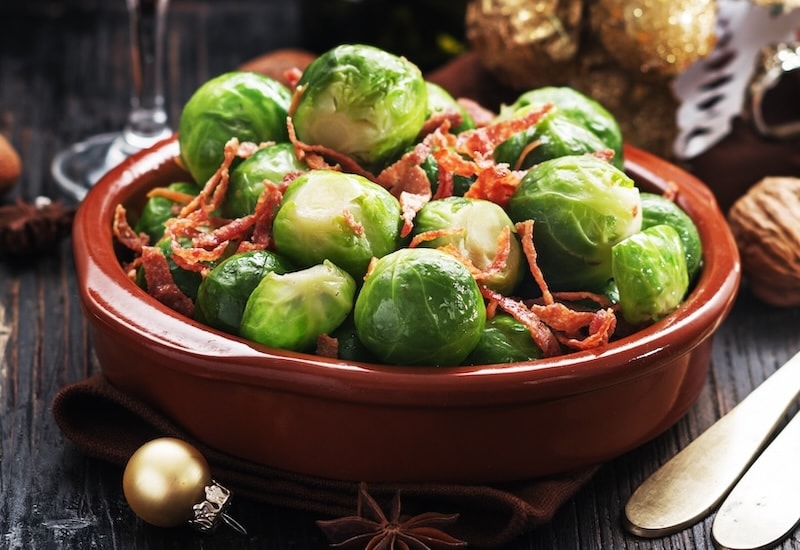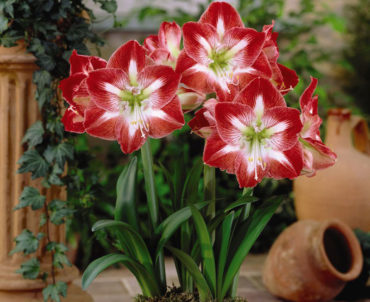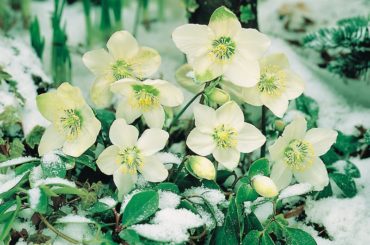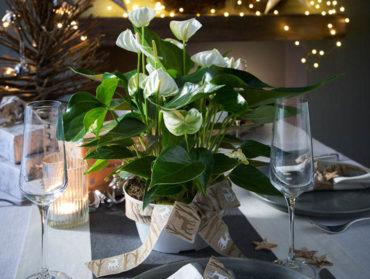Wow friends and family with an extra special Christmas dinner full of your own home grown veggies. With just a little planning in advance, you can serve up crispy roast potatoes, delicately flavoured sprouts, delicious carrots and the sweetest parsnips – all from your very own veg patch. Follow the variety suggestions, growing tips and planting times below to get your fantastic festive feast underway in plenty of time for next year.
For the best results, use Suttons high quality vegetable seeds for your Christmas crops.
The best potatoes for Christmas dinner
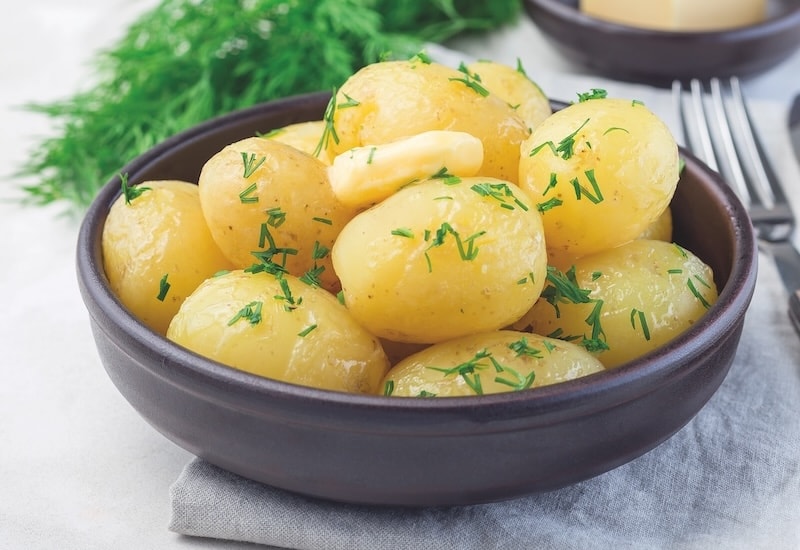
Image: Potato ‘Charlotte’ from Suttons
Potatoes are the bedrock of any great Christmas lunch whether you love them boiled, mashed or roasted. Choose from our flavour-packed range of late season seed potatoes or store your maincrop favourites in a cool garage through autumn to enjoy them during the festive season. We carefully keep our late season seed potatoes at low temperatures so they’re raring to go when you receive them in the summer. Here are a few of our favourite spuds to eat at Christmas:
- ‘King Edward’. Plant between March and May and harvest between August and September. This traditional maincrop favourite needs a fairly long growing season and produces a harvest of large tubers 17-20 weeks after planting. Simply store these tasty spuds in a cool, dark space until the big day. Perfect for roasting, King Edwards will be crispy on the outside and fluffy on the inside, but they can also be boiled, mashed, sautéed, baked and turned into Boxing Day chips!
- ‘Maris Peer’. The best late season variety for that special ‘new potato’ flavour. Plant these fantastic scab resistant tubers in July and start to harvest your spuds from late October. Leave some of the tubers in the ground where they’ll stay fresh for harvesting on Christmas morning. ‘Maris Peer’ are delicious boiled and served with butter and a sprinkle of salt.
- ‘Charlotte’. Holding an Award of Garden Merit, ‘Charlotte’ is a tried-and-tested late season winner. This variety’s blight tolerance makes it a good choice for many growers and it produces large, oval shaped tubers that make a fabulous salad for the buffet table.
Growing tip: Plant your late-cropping seed potatoes outdoors in June and late July. Choose fertile ground with good texture or pop your spuds into patio potato bags with peat-free compost. Earth up the soil around the developing shoots as they grow through August. Make sure you water your spuds regularly. Start to harvest the delicious tubers from late October onwards. Read our guide on ‘how to grow potatoes’ for more helpful advice.
The best Brussels sprouts for Christmas

Image: Brussels Sprout Seeds ‘F1 Brigitte’ from Suttons
Love them or hate them, Brussels sprouts are an absolute must-have when it comes to Christmas dinner. Why not try your sprouts steamed or roasted with smoky bacon or pancetta? And for something a little different why not sneak in a few ‘kalette’ plants too. Our range of Brussels sprout seeds is full of top performers but here are a few of our favourites for the festive celebrations:
- Brussels sprout ‘Brodie’. Expect a sprout with gentle flavour that the whole family will enjoy, including the kids. ‘Brodie’ continues to crop through winter and well into the new year.
- Brussels sprout ‘F1 Brigitte’. These firm buttons hold on the stem for longer making them a great cut-and-come-again crop for the winter veggie patch. A vigorous hybrid, ‘Brigitte’ shows good disease tolerance, crops heavily and has a delicious flavour.
- Brussels sprout ‘Red Ball’. A unique deep purple sprout with a long cropping season. This variety not only tastes great, but makes an eye-catching addition to the veg patch. The buttons have a sweeter flavour than other varieties and the fabulous colour deepens as the weather cools.
Growing tip: Sow your Brussels sprout seeds from February to March. Keep them undercover and only plant the seedlings outdoors into their final positions in May when the weather warms. Expect to start harvesting your own tasty sprouts from September until the end of December. Harvest the buttons by gently twisting them off the main stem, starting at the bottom of the plant and working your way up as the season progresses. Read our full article on how to grow Brussels sprouts for more tips.
The best Christmas parsnips
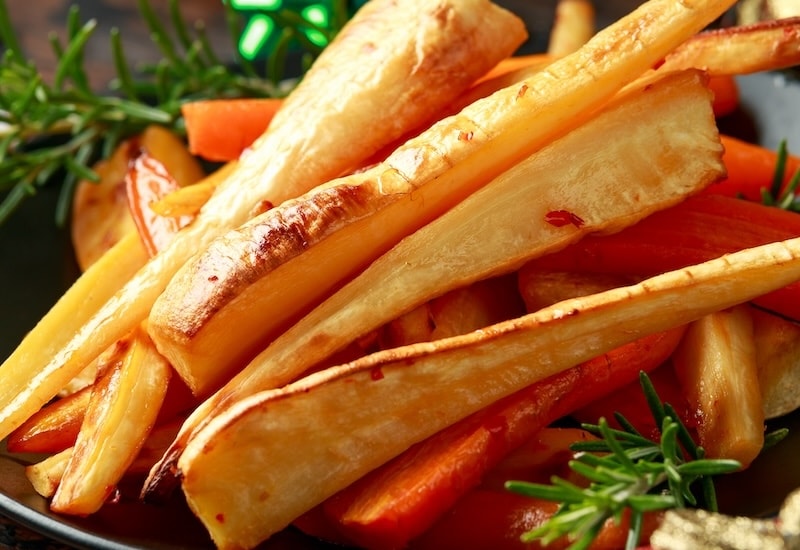
Image: Parsnip ‘F1 Warrior’ from Suttons
Parsnips are a traditional favourite for Sunday roasts and an essential part of a Christmas dinner. Their sweet flavour complements many dishes and they’re traditionally roasted with honey. From thick white to long slim tapering roots, parsnips provide a dependable crop all through autumn to December. Stuck for choice? Here are our top performing parsnip seeds for your Christmas day feast:
- Seed tape parsnip ‘Tender & True’. A wonderfully sweet variety, the seed tape makes these seeds even easier to sow and the spacing a doddle. Just like the name, expect to harvest long, smooth-skinned roots that have good resistance to canker.
- Parsnip ‘White Gem’. The best parsnip to grow in shallow soils. With a fantastic flavour and productive nature, this variety forms shallow, thick roots that are easy to harvest.
- Parsnip ‘F1 Warrior’. British bred parsnip ‘F1 Warrior’ roots develop up to 28cm long! This fantastic performer has chunky, flavoursome roots that show good resistance to canker.
Growing tip: Direct sow parsnip seeds in April, in rows 30cm apart. Germination takes up to 28 days and is faster in warmer spring temperatures. Keep your parsnips weed free through the summer and water every week to keep the soil moist and encourage the roots to swell.
The best Christmas carrots
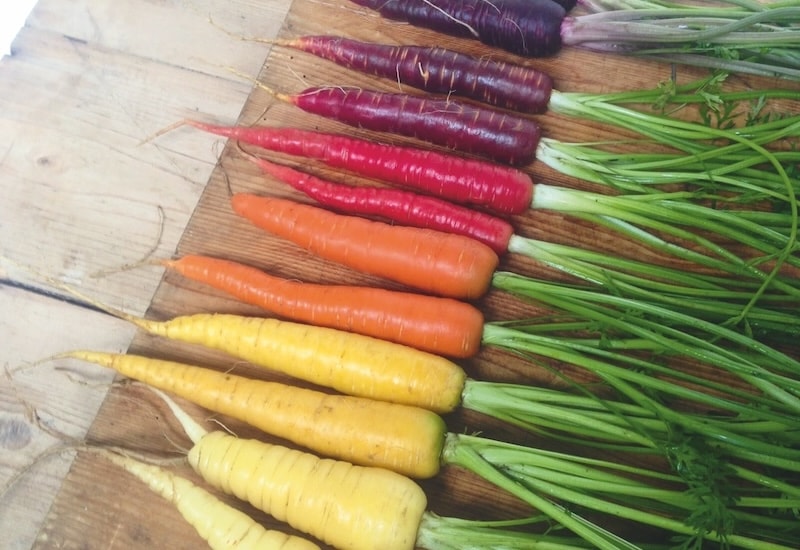
Image: Carrot ‘Rainbow Mix’ from Suttons
One of the best root vegetables to enjoy at Christmas, carrot seeds offer fantastic value for money and are easy to sow, happily growing through into the colder months. Roast, mash or steam these sweet roots to make the perfect companion for rich gravy. Here are our top picks for Christmas dinner carrot varieties:
- Carrot ‘Autumn King 2’. A hardy variety that stores beautifully, ‘Autumn King 2’ crops well into December from July sowings. The long, cylindrical roots are perfect for roasting with honey! Expect to have a harvest around 70 days after sowing.
- Carrot ‘Black Nebula’. A striking purple root which retains its colour through cooking. ‘Black Nebula’ is packed with healthy anthocyanins and is one of the darkest purple varieties available to grow from seed. Roast these crunchy, earthy roots with a knob of salted butter.
- Carrot ‘Rainbow Mix’. Serve a rainbow at Christmas with this colourful mix. Harvest roots in yellow, orange, red and purple around 120 days after sowing to make a delicious coleslaw, or steam and enjoy with butter and a twist of pepper.
Growing tip: Sow your carrot seeds in July for a December harvest. Thin your carrot seedlings to leave 5cm between plants and allow plenty of room for them to swell. Harvest each carrot by gently twisting until the root lifts cleanly out of the ground. Store any early pickings of your carrots in buckets of cool, moist sand in a garage or shed until you need them for the Christmas table. For a comprehensive guide to growing carrots, read our article.
The best Christmas cauliflower cheese
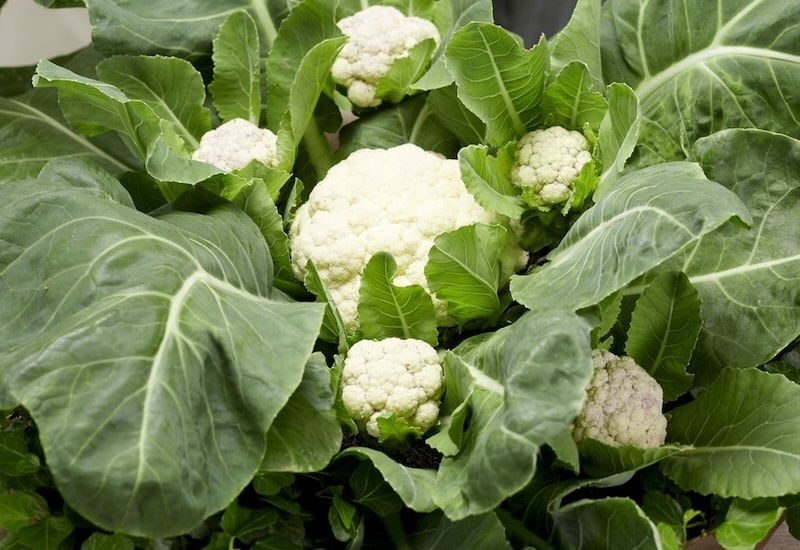
Image: Cauliflower ‘F1 Multi-headed’ from Suttons
Cauliflower seeds are easy to sow and homegrown cauliflower cheese is a real crowd pleaser! Just like broccoli and kale, cauliflowers are brassicas and love cool, moist conditions. With a bit of special attention, you can grow your own pure white tasty florets for harvesting through the winter season. Here are some of our favourite cauliflower varieties to add to the Christmas menu:
- Cauliflower ‘Succesional Cropping Mix’. A mix of vigorous F1 varieties keep this mix of cauliflowers producing through autumn and into winter. Cauliflowers ‘F1 Amsterdam’, ‘F1 Seoul’, and ‘F1 Brasilia’ all produce pure white tasty curds perfect for roasting or making a delicious cauli cheese.
- Cauliflower ‘Romanesco’. Superb cold tolerance makes this unique variety perfect for growing in cooler areas. Enjoy the lime green, spiral heads in exactly the same way as you would a white cauliflower. This beauty looks really impressive on the Christmas table.
- Cauliflower ‘F1 Multi-headed’. Try something a little different with this ‘cut-and-come-again’ multi-headed cauliflower. Perfect for container growers, this variety produces a delicious main head with four to five smaller offshoots. Delicious steamed.
Growing tip: Sow your cauliflower seeds in June for a harvest around Christmas time. Expect to get a crop 20-24 weeks after sowing your seeds. Plant your cauliflower plantlets outdoors into their final positions when they have at least two true leaves in July, ensuring they stay moist and weed free until the cauliflower ‘curds’ swell to a good size. If your harvest is a bit ahead of schedule, simply cut the curds and pop them in the freezer. Defrost for cooking over the festive period, as and when you need them. Our full article on how to grow cauliflower is packed with helpful advice.
The best red cabbage for Christmas
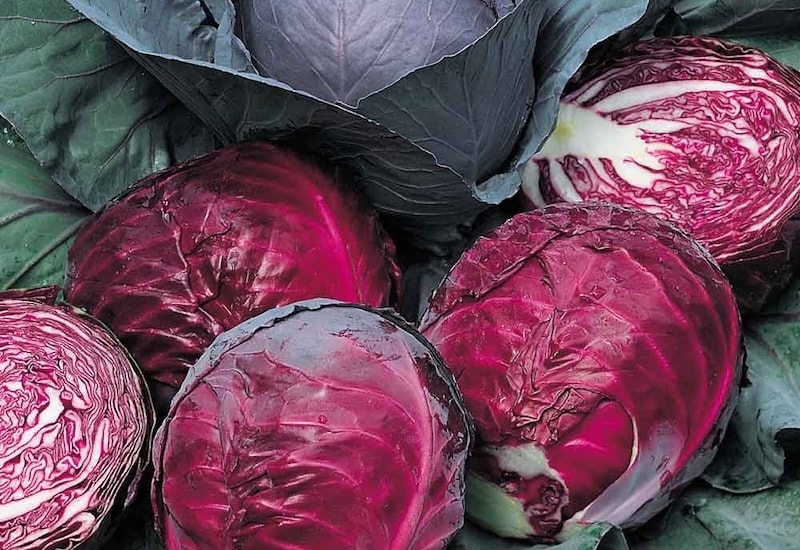
Copyright: Floramedia
Whether you love to pickle your red cabbage or slowly simmer it into a delectable dish with vinegar and brown sugar on the big day, this healthy, colourful addition to the feast is ideal for winter cropping. It’s the perfect leftover to add to your Boxing day sandwiches too! If you add ericaceous compost to the soil as your cabbages grow, it will make the red colour even more intense. Here are our favourite red cabbage seeds for Christmas:
- Red cabbage ‘Pretino F1’. If you’re after a delicious red cabbage for a smaller Christmas gathering, grow ‘Pretino F1’. The compact heads are very tight and harvestable at just 0.5kg, perfect for smaller dishes. This is a great variety for balconies and container growers too. Expect to harvest the heads around four months after sowing.
- Red Cabbage ‘Red Drumhead’. Named for its fabulous colour, this top variety is a winner for looks. The large compact heads and deep purple leaves act as an ornamental boon to any garden whilst the antioxidant rich leaves make splendid pickles and work very well shredded raw into salads.
- Red Cabbage ‘F1 Lodero’. Perfect for those who have battled with clubroot in past cabbage crops. This resistant variety is a strong choice with excellent flavour to boot. The long cropping season and vigorous growth habit make it a popular favourite.
Growing tip: For a Christmas harvest, make sure you sow your red cabbage seeds no later than June. The heads take around five months to mature into their full harvestable size. Regularly water your plants as they grow to reduce risk of bolting, especially during any hot summer weather.
We hope you’re excited about growing your own Christmas dinner for next year. And to make sure your table has a show-stopping centrepiece, here are the best festive houseplants to decorate your home. We love to see your masterpieces! Tag us at #mysuttonsjourney so we can see how you get on.
Image: Brussels Sprout Seeds – Brodie F1 from Suttons
Last Updated on December 3, 2024 by Suttons Horticultural Team

